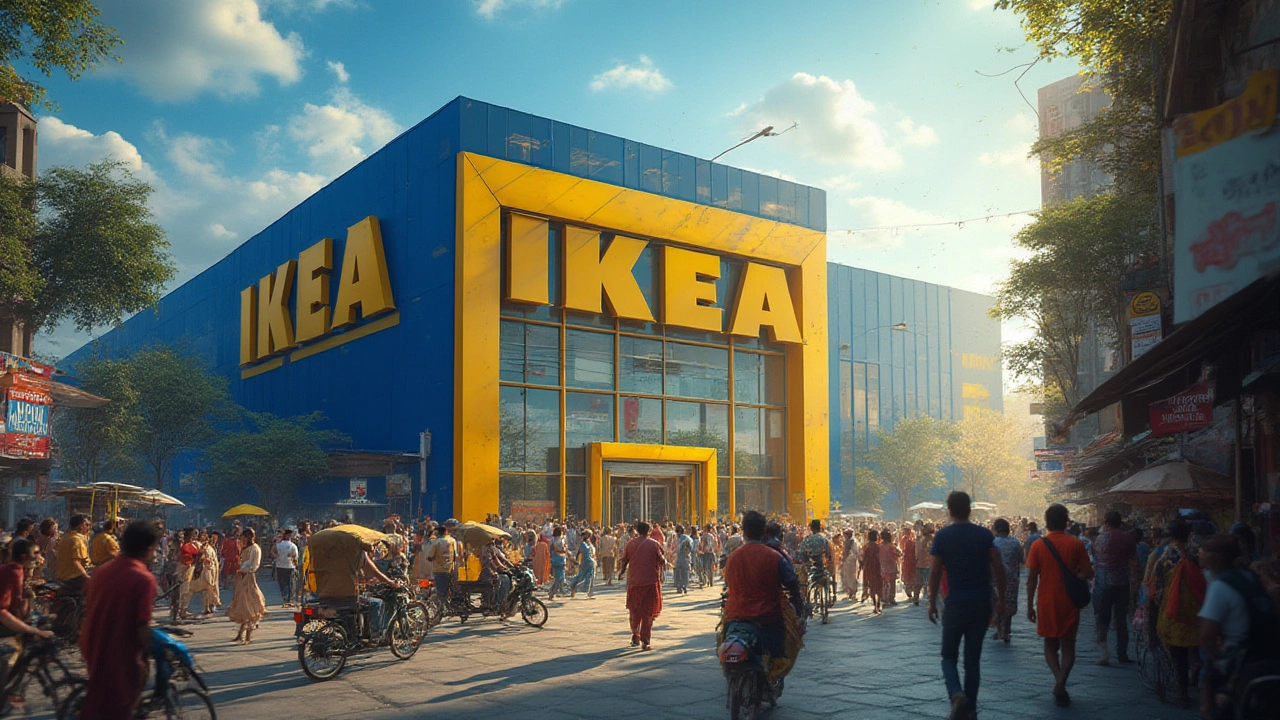- Where Are Dr Reddy's Drugs Manufactured? Inside India's Pharma Powerhouse Apr 20, 2025
- Food Processing Unit Classification: Types and Examples Oct 25, 2025
- Leading Pharma Companies in India 2024: Top 5 Picks Jan 10, 2025
- Which Company Leads in Plastic Pollution Today? Feb 16, 2025
- Does Your Netflix India Subscription Work in the USA? Everything You Need to Know Jun 25, 2025
IKEA Expansion: Why the Furniture Giant Is Growing Fast
Did you know IKEA added more than 70 new stores across the globe in the last two years? That kind of speed feels almost unbelievable for a company that still ships flat‑packed boxes from giant warehouses. The reality is that IKEA’s growth plan is a mix of data‑driven market scouting, cheap‑but‑stylish design, and a supply chain that can pivot quickly.
If you’re wondering how the brand can keep opening doors on every continent, the answer starts with its core promise: affordable, well‑designed furniture that anyone can assemble. By keeping product costs low, IKEA can price new markets competitively, which in turn fuels demand and justifies the investment in new real‑estate.
Why IKEA Is Expanding Fast
First, IKEA uses a master‑plan that lines up store size, location, and local buying power. The company runs a sophisticated algorithm that looks at population density, average income, and even traffic patterns to pick a spot that will hit sales targets within months, not years.
Second, the flat‑pack model isn’t just a gimmick; it’s a logistics advantage. Shipping a disassembled sofa costs far less than a fully built unit, and the same principle applies to every item on the catalog. That means lower freight costs, smaller warehouses, and faster replenishment cycles.
Third, IKEA invests heavily in its own manufacturing hubs. By owning or closely partnering with factories in Europe, Asia, and lately, North America, the company can control material costs and quality. When a new store opens, the supply chain is already primed to deliver the right mix of products without a huge delay.
Finally, sustainability is now part of the expansion playbook. New stores are designed with energy‑efficient lighting, solar panels, and circular‑economy principles. This not only cuts operating expenses but also appeals to eco‑conscious shoppers, making the brand more attractive in markets that value green initiatives.
What It Means for Shoppers and Suppliers
For you as a shopper, the rapid rollout translates into more locations where you can walk in, test a bed, and leave with a flat‑pack that fits through your front door. It also means more local job opportunities – from store staff to delivery drivers – and a boost in regional economies.
Suppliers benefit from a steady, large‑scale order flow. Local manufacturers that can meet IKEA’s standards often secure long‑term contracts, giving them a reliable revenue stream. In turn, that encourages more domestic production, which reduces import reliance and can lower prices even further.
There’s a flip side, though. The rush to open stores can crowd out smaller furniture retailers who can’t match IKEA’s pricing power. Some communities worry about the brand’s big‑box footprint changing the character of shopping districts. However, IKEA’s recent “city‑store” concepts try to blend into urban areas with smaller footprints and more community spaces.
Overall, IKEA’s expansion is a calculated gamble that pays off when the pieces click: affordable design, a lean supply chain, data‑driven site selection, and a growing emphasis on sustainability. Whether you’re a homeowner hunting for a new dining table, a job seeker, or a local factory looking for a partner, the wave of new IKEA stores is likely to touch your life in some way.
Why IKEA Chose India: Unpacking the Swedish Giant's Expansion Strategy
- Aarav Sekhar
- Jul 9, 2025
Explore the real reasons IKEA entered India. Go beyond the headlines to learn about their strategy, the market forces, and what made India irresistible for the Swedish home giant.
